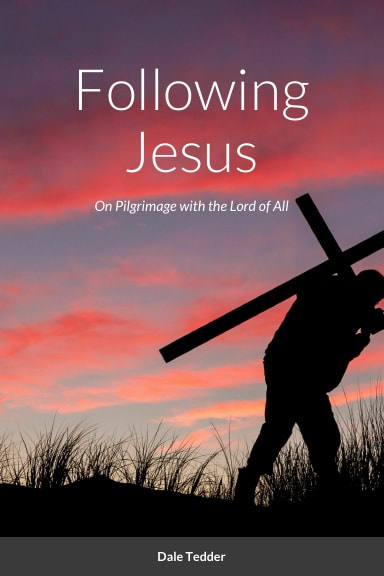CLICK HERE to listen to this week's devotional on the Walking Points Podcast, or listen to it on your favorite podcast platform. There's always extra content on the audio version that I pray will bless you. John 12:24-26 - I tell you the truth, unless a kernel of wheat falls to the ground and dies, it remains only a single seed. But if it dies, it produces many seeds. [25] The man who loves his life will lose it, while the man who hates his life in this world will keep it for eternal life. [26] Whoever serves me must follow me; and where I am, my servant also will be. My Father will honor the one who serves me. Hold On Loosely In our scripture Jesus teaches his disciples he is going to die, but that he must if they would live. A kernel of wheat must die if it would produce many seeds. Have you ever wondered why reformation and revival has not broken out across the church at large or yours in particular? There are perhaps many reasons, but one reason is we are holding on too preciously and tightly to our own lives, unwilling to die. Jesus said in order to reproduce many seeds we must die. Do we love our lives too much in this world? The Rule My life for yours. Genuine, substitutionary, and sacrificial living. Following and serving our King wherever he may lead, to whatever end. This brings honor from the Father. This glorifies the Father. This universal principle is the rule, not the exception, because it reflects the very character of the Lord we worship. My life for yours. God calls us as Christian parents to train and nurture our children in the Lord – when they rise, when they go to bed, as they live throughout the day, when it’s convenient, when it’s inconvenient. We must make sure our children are not merely “taught at” but saturated in the things of God each day, all day, because they are eternal beings and heirs of the King. “I tell you the truth, unless a kernel of wheat falls to the ground and dies, it remains only a single seed. But if it dies, it produces many seeds.” Your Legacy Are you leaving a godly legacy to and for your children and your children’s children for a thousand generations? Are you dying so they can live – really live? Can you think outside your individual life to see how your own death will extend the Kingdom of God by producing many seeds? Will you believe the promises God has made regarding faithful, covenantal parenting? Your life for theirs and for a thousand generations after them. Talk about a payoff! But this is hard. That’s why it’s called death. Death to self. It is intentional, committed, disciplined. It’s every day, all day. It’s the discipling of your children because it is your joy, blessing, and responsibility before God to do so. Your life for theirs. The Kingdom of God grows in such ways. Darkness is engulfed by light through such ways. Reformation and revival are ushered in through such faith and obedience. God promises blessings to such as these. But First You Must Die Do with less stuff if it means more time with your family. Play with your children at the end of the day, even when you are tired. Discipline your children, even when you would rather not. Cast a God-glorifying vision before your children of who they could be for Jesus. Read great stories to your children so their imaginations are ignited as they put themselves in the places of the characters in the stories. Tell them about the heroes of the faith who have gone before them, so they might see how others have given themselves for Christ and his Kingdom. Teach your children who God is – his person, plan, power, and purpose. Drive home again and again what the gospel is and is not (after all, we’re not trying to merely make better citizens or “behaviorally correct” robots). Teach and show them God’s grace. They must learn what it means to know, love, and follow Christ. They have to understand that the Christian faith is a total world and life view that addresses every sphere of life. Create A Christian Culture We are called to create Christian cultures in our homes through the power of God’s Word and Spirit, so our children will bring that salt and light influence into every other sphere of their lives for Christ. This is first and foremost the responsibility of Christian parents, not others, not even the church. Our lives for theirs. We must die so they can live. Can we let go? Of our wants, things, desires, passions – our very lives? We must if we would find real life – abundant life – eternal life. Life in service to the King is not our own. It’s better. Only in dying are we raised. Only in dying are more seeds produced, and therefore, more fruit. Our lives for theirs. Faithfulness Now From our commitment and hard daily labor now, what might God do later in response? Might he use one of our children, (or one of our children’s children), to bring many to Christ, transform the culture, usher in reformation and revival in the church, extend the Kingdom of God as never before? We have every reason to believe he will! But we must die. We must fall to the ground and die. We must give our lives for our children’s lives, and for their children after them, so God may be pleased and choose to honor us by blessing those for whom we gave our lives. My life for yours. Our lives for theirs. This is biblical faith. Walking Points · What makes dying to self so difficult, even for your children? · What are some practical ways you can give your life for theirs? · Write down some ideas of new things you can do to produce fruit in the life of your children. · Discuss these ideas with two or three other others who will hold you accountable for putting your ideas into practice and who will pray for you and your children. Don’t wait to do this… start today. Prayer
0 Comments
|
Click image above to subscribe to my newsletter.
Dale TedderThanks for stopping by. Learn more about me, my ministry, and this website by clicking here. Please visit my bookstore
Click, Listen, and Subscribe to My Podcast
Updated: 2-5-24 Connect and/or Follow for more content...
The Book of Acts
Updated 2-28-24 Sermons
Updated 3-4-24 Categories
All
Click the image above to order this book and study guide about the most important person you will ever meet.
Archives
January 2024
Click image above to learn more about and order this follow-up to "Lord of All."
Listen, my son, and be wise, and set your heart on the right path: (Proverbs 23:19)
“Enter by the narrow gate. For the gate is wide and the way is easy that leads to destruction, and those who enter by it are many. For the gate is narrow and the way is hard that leads to life, and those who find it are few.
(Matthew 7:13-14) |






 RSS Feed
RSS Feed





